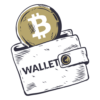Stablecoins are digital currencies whose value is tethered to an external asset, like gold or fiat currency, which has contributed to their initial reputation for dependability. In May, however, the third-largest stablecoin, TerraUSD (UST), unexpectedly “de-pegged” from the U.S. dollar, plummeting to less than one cent per dollar and precipitating the collapse of its sister token, LUNA.
In addition to generating concerns around risk disclosure, stablecoins have emerged as a major source of concern for authorities, who worry that they will ultimately constitute a significant threat to the sovereignty of national currencies. As cryptocurrency investors, including a rising number from emerging nations, re-enter the diversified pool of stablecoins, it is reasonable for some to question the security of these assets. Here are the 5 best stablecoins to buy now.
-
Tether (USDT)
Even if Tether’s market capitalization just fell below $70 billion, its lowest level since October 2021, it is still the largest stablecoin in the world and hence at the forefront of this worldwide expansion. Tether was launched as Realcoin in 2014 with the intention of addressing both the excessive volatility and lack of convertibility of cryptocurrencies.
In the past 18 months, however, even Tether has been affected by the decline of other coins, such as TerraUSD, and the sector’s volatility. USDT is less transparent than another coin on this list, USD Coin, and its market share has decreased. Regardless, USDT’s market worth is greater than three times its level in December 2020.
-
USD Coin (USDC)
USD Coin is the most trustworthy and transparent stablecoin currently available on the market. Since its inception, USDC has placed a strong emphasis on regulation and transparency, lending Circle credibility as its issuer. The parent company’s declared objective is to connect traditional finance and blockchain technology, a methodology that appears to be successful.
The USDC coin is the first stablecoin that publishes monthly audited reserves for all users to examine on their website. Moreover, this transparency aids in stabilizing USDC’s price, which increases its acceptance. In recent weeks, rival Tether has lost market share, while USDC has gained market share.
-
Binance USD (BUSD)
Binance USD is tied to a Binance cryptocurrency exchange. Despite discussions about going public over the next two to three years, Binance remains a private corporation. This indicates that it is less accessible than a public corporation.
Authorized by the New York State Department of Financial Services, BUSD is issued in conjunction with Paxos Trust Co. LLC, a prominent name in the cryptosphere. Paxos also issues a much smaller stablecoin called the Pax Dollar. BUSD, which has been around just over two years, is already the world’s third-largest stablecoin by market capitalization, after USDT and USDC.
-
Dai (DAI)
Dai (DAI) is the first decentralized stablecoin currently accessible on the market, implying it is algorithmic and not backed by a central authority. DAI is soft-pegged to the U.S. dollar and uses collateralized debt in the form of Ether (ETH), the Ethereum blockchain’s native coin. This necessitates slightly greater risk management to secure (adequate) reserves.
The disadvantage of Dai is that it lacks an accurate peg. The inability to predict where the free-floating rate will make it difficult for banks to use Dai for lending. Lending is one of the stablecoins’ primary advantages over other cryptocurrencies.
-
Pax Dollar (USDP)
Paxos, as a corporation, is fourth on the list after Circle, to gain regulatory approval for its dollar transactions. This speaks well for the future of Paxos. Paxos Standard (PAX) was introduced in 2018, and Pax Dollar (USDP) emerged in August 2021.
Paxos renamed the coin to align its name and ticker more closely with the U.S. dollar. Even though USDP is the sixth-largest stablecoin by market capitalization and is licensed by the New York State Department of Financial Services, it lags behind the leading coins in terms of size.
Stablecoins, as their name implies, are intrinsically stable assets, which makes them a viable store of value and supports their use in regular transactions. Additionally, stablecoins enhance the portability of crypto assets across the ecosystem. Stablecoins pave the door for combining traditional financial markets with the rapidly evolving decentralized finance (DeFi) sector. As a driver for market stability, stablecoins serve as the principal vehicle for cryptocurrency acceptance in loan and credit markets, inheriting much of the utility that was previously exclusive to fiat money.

